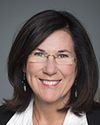It's not mandatory. We ask for people do it. But we get a great rate of return on it. Over 10,000 people answered the last one. When you're looking at that, it's a pretty good sample size for the research that's in there.
But if I can come back to how we evaluate a recruit's understanding, when the recruits go through the process of joining, they ultimately go through a Canadian Forces aptitude test which measures their cognitive abilities. They also have to go through an interview process. As part of the interview process, we indicate to them what it is that we expect as behaviour in the Canadian Armed Forces. There has to be an acknowledgement from them that it's a place where you cannot discriminate based on a number of things. You can anticipate what they are. It's your sexual orientation, your gender, your age, those types of things.
After that, when they come in to the recruiting school, the leadership and recruiting school in Saint-Jean-sur-Richelieu, they then have to undergo a number of things that relate to training, inculcating the aspects that we consider to be the values and ethics of the Canadian Armed Forces. Every single soldier coming in as a regular force soldier undergoes six hours of training over three different weeks that look and make sure that he or she understands what our values are, but also understands the tenets of Operation Honour. That's taught not only by the section commander, but also by the commandant of the school in the fifth week of the course. For the officers it's 6.6 hours during that same period of time. The training for those two groups is 10 weeks and 12 weeks, respectively, for the junior NCOs and for the officers coming in.
Along the way, we make sure that we not only expose the recruits to what is expected behaviour, but also that they get taught what the expected behaviour is. If they actually run afoul of those behaviours, then we have the administrative and disciplinary measures available to us. Every now and again you will have folks who come in and display the kind of behaviour that's unacceptable, whether it be racist or whether it be sexualized behaviour that's not conforming with our ethics and values, and if we cannot correct it we'll get rid of those individuals before we invest too much time in them.



